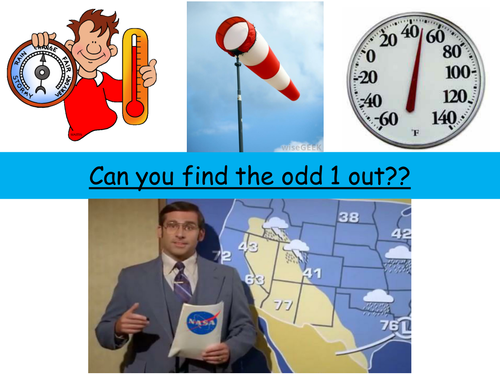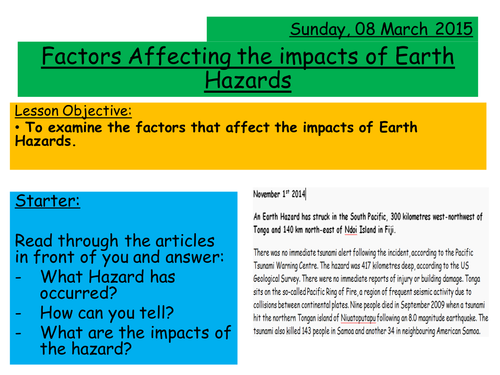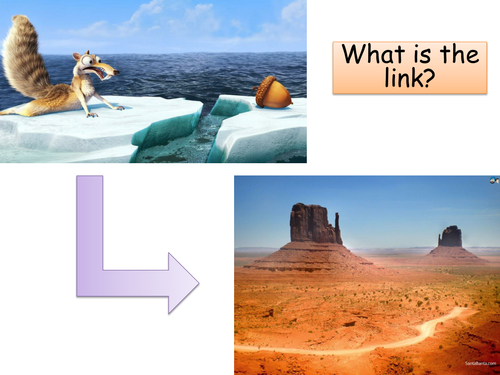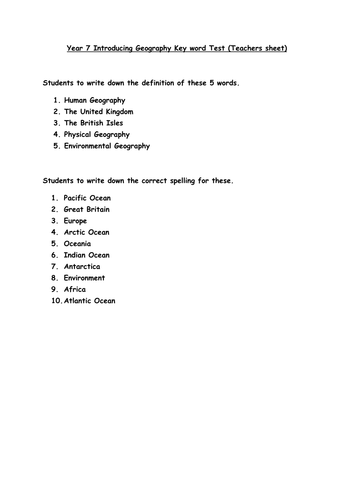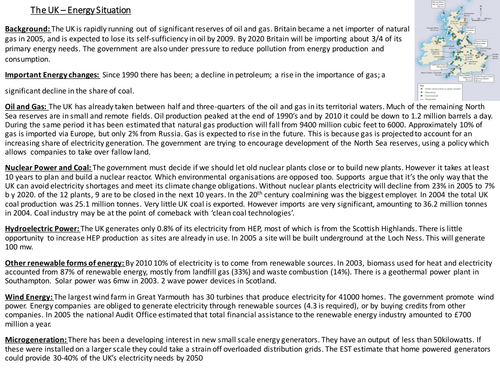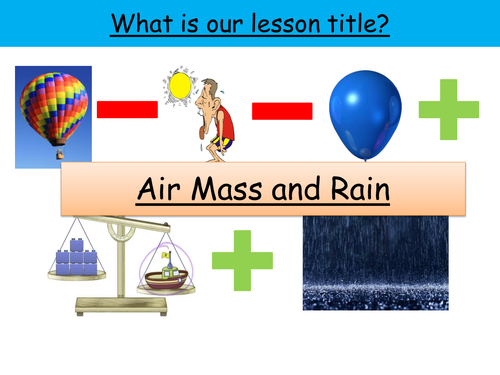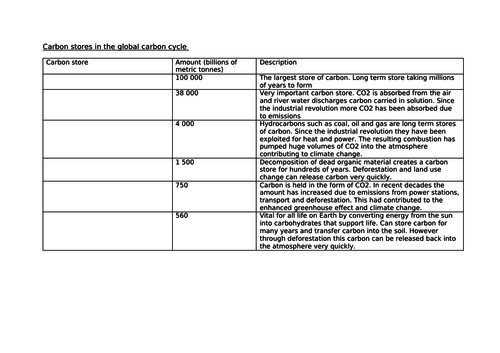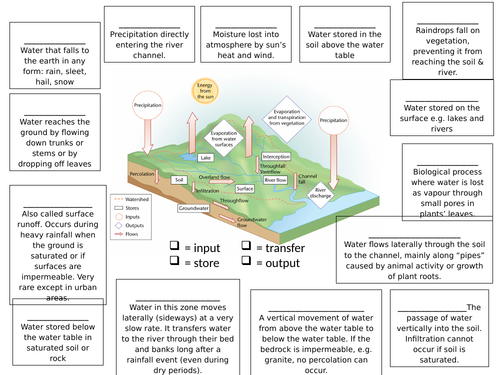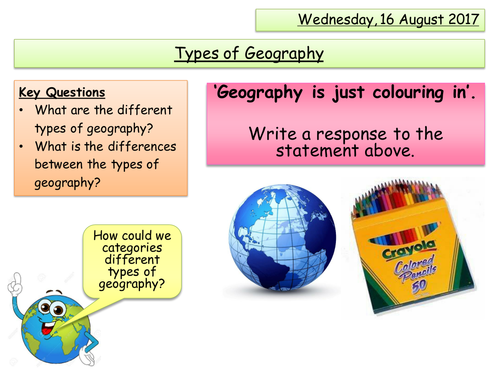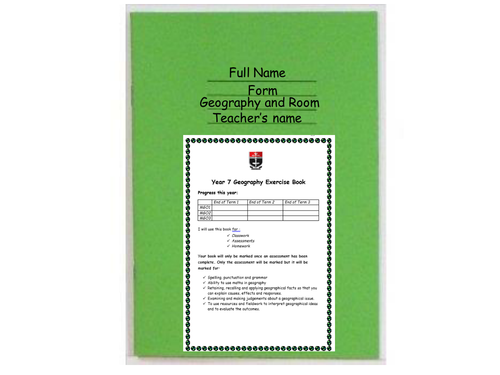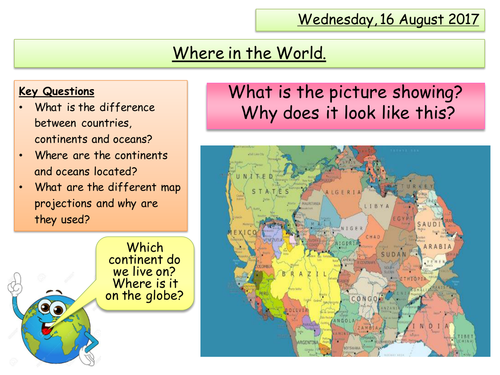
156Uploads
241k+Views
299k+Downloads
All resources

Measuring Weather
A lesson that shows students how we measure the weather. It also gets students to look at reading weather forecasts and being able to interpret them.

Migration and Urbanisation
This lesson is based around the new AQA GCSE Specification. This is the second lesson in the unit titled Urban Issues and Challenges. The main aim of this lesson is cover the following element of the specification:
- Factors affecting the rate of urbanisation – migration (push–pull theory), natural increase.

Factors affecting the impacts of Earth Hazards
This resource examine the factors that affect the impacts of earth hazards.

Mass Movement
To examine the cause of mass movement and to explore key features of the different types of mass movement.

Climate Throughout History
This lesson aims to look at how the climate has changed throughout history.

Sustainability assessment
This assessment is a decision based activity where students use their knowledge of their local area and the meaning of sustainable to choose a location for a new warehouse.
This was not levelled and is designed to give feedback to help students improve for next time. However a level criteria would be possible to create.

Diffusion and the Demographic Transition Model
To explain diffusion, carrying capacity, exponential growth and to be able to relate these to the demographic transition model.

OCR A Level River Environments Case Study Summary Sheets
Case Study Summary sheets for the River environments unit of the OCR A Level Specification. This covers: the River Tees, Thames River, Mekong, Southern England Floods, Bangladesh Floods, Managing the Thames at Oxford, Bangladesh Management and The Colorado River.

OCR A Level Energy Issue Case Study Summary Sheets
Case study summary sheets that are taken from the energy issue unit of the OCR A Level specification. This covers UK, Mali, Nigeria, Norway and Germany.

Air Mass and Rain
This lesson focuses on showing students the different air masses affecting the UK, in addition to the weather they bring. It also gets students to look at the 3 different types of rainfall and use their ability to read geographical maps.

Hydrographs - AQA A Level
This lesson is based around the new AQA A Level specification. This is a lesson in the unit titled Water and Carbon Cycles. The main aim of this lesson is to cover the following element of the specification:
3.1.1.2 – The water cycle
Runoff variation and the flood hydrograph.
Any pages referenced are from the Oxford physical textbook.
Please note I do not own the rights to any of the images used in this powerpoint.

The Carbon Cycle - AQA A Level
This lesson is based around the new AQA A Level specification. This is a lesson in the unit titled Water and Carbon Cycles. The main aim of this lesson is to cover the following element of the specification:
3.1.1.3 – Global distribution, and size of major stores of carbon – lithosphere, hydrosphere, cryosphere, biosphere, atmosphere.
Factors driving change in the magnitude of these stores over time and space, including flows and transfers at plant, sere and continental scales. Photosynthesis, respiration, decomposition, combustion, carbon sequestration in oceans and sediments, weathering.
Any pages referenced are from the Oxford physical textbook.
Please note I do not own the rights to any of the images used in this powerpoint.

Drainage Basin - AQA A Level
This lesson is based around the new AQA A Level specification. This is a lesson in the unit titled Water and Carbon Cycles. The main aim of this lesson is to cover the following element of the specification:
3.1.1.2 – The water cycle
Drainage basins as open systems – inputs and outputs, to include precipitation, evapotranspiration and runoff; stores and flows, to include interception, surface, soil water, groundwater and channel storage; stemflow, infiltration overland flow, and channel flow. Concept of water balance.
Any pages referenced are from the Oxford physical textbook.
Please note I do not own the rights to any of the images used in this powerpoint.

Carbon Budget - AQA A Level
This lesson is based around the new AQA A Level specification. This is a lesson in the unit titled Water and Carbon Cycles. The main aim of this lesson is to cover the following element of the specification:
3.1.1.3 – The carbon budget and the impact of the carbon cycle upon land, ocean and atmosphere, including global climate.
Any pages referenced are from the Oxford physical textbook.
Please note I do not own the rights to any of the images used in this powerpoint.

Atlas Challenge
This lesson aims to get students use to using an atlas and being able to identify countries, towns, cities and oceans using the index of an Atlas. In addition to this it teaches students how to write an accurate geographical description. By the end of the lesson students will be able to answer the following key questions:
How do we use an atlas to find places?
How do we write a geographical description?

Types of Geography
This lesson aims to show students the 3 different types of geography: physical, human and environmental. Students will be able to answer the following key questions by the end of the lesson:
What are the different types of geography?
What is the differences between the types of geography?
NOTE - I do not own the rights to the video.

Welcome to Geography
An introduction to Geography for year 7's. This lesson will allow students to answer the following key questions:
What is considered to be geography?
Why is geography important?

Where in the World (Continents and Oceans)
This lesson aims to get students to gain a better understanding of the continents and oceans and their location in the world. In addition to this it gets student to think about the way in which a 2D map is created and therefore the representation of continents/countries on a map. By the end of the lesson students will be able to answer the following key questions:
What is the difference between countries, continents and oceans?
Where are the continents and oceans located?
What are the different map projections and why are they used?

UK Physical Geography
This lesson aims to get students use to the location of the different mountain regions and the main Rivers located across the UK. This is used mostly for year 7's but can also be adapted to use with the new AQA GCSE Physical Landscapes Topic.

